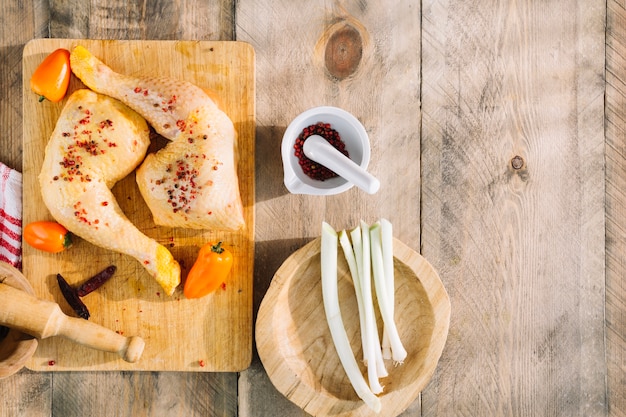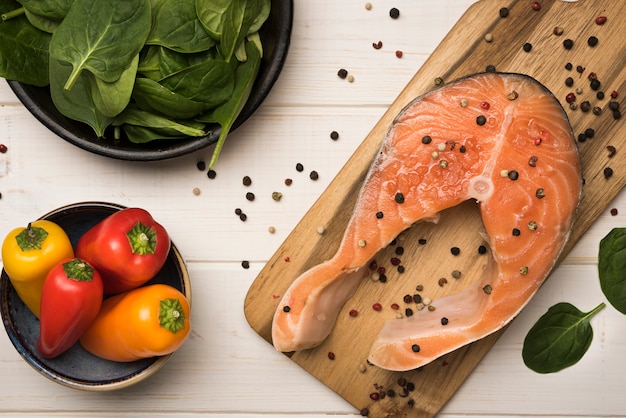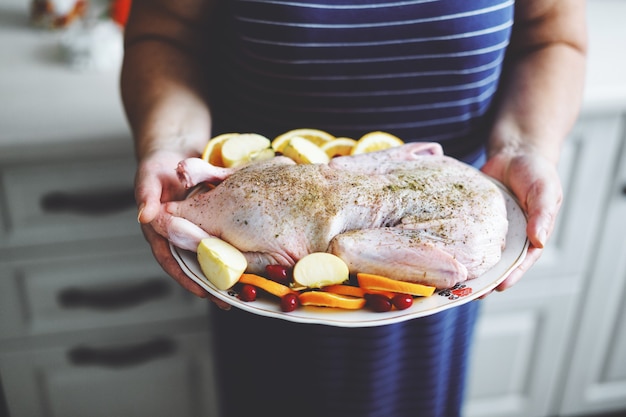Alright, you've got a bone-in turkey breast on your menu – a fantastic choice! It's a real crowd-pleaser, and let's be honest, much easier to manage than a whole turkey. But let's be real, roasting a turkey can feel a bit daunting, especially when you want to nail that perfect, juicy result. Fear not, I'm here to be your guide! From choosing the right bird to mastering the art of brining and achieving a flawless roast, I'm sharing my tried-and-true tips, tricks, and a few personal stories along the way. Get ready to impress your guests with a turkey breast that's truly spectacular.
(Part 1) Picking the Perfect Bird

You've got a feast to plan, and a centerpiece like a bone-in turkey breast demands some careful consideration. It's not just about grabbing the first one you see!
Size Matters
First things first, let's talk about size. A bone-in turkey breast usually weighs between 4 and 8 pounds, which is a great starting point for a family gathering. Personally, I'm a bit of a foodie, so I always go for a 6-pounder – it's just enough to have leftovers for delicious sandwiches later! But, if it's just you and your partner, a smaller one will do the trick. Remember, you can always freeze any extra, so no need to stress about having too much.
Fresh or Frozen?
Here's a question I get asked a lot: Fresh or frozen? Honestly, I'm a big fan of fresh turkey. I find it has a better flavor and texture, and the skin tends to get crispier when it's roasted. But, if you're short on time, a frozen turkey breast works just fine. The key is to defrost it properly in the fridge for a couple of days before cooking. No rush defrosting, folks!
Skin On or Skin Off?
Okay, now we get to the great debate: skin on or skin off? Some swear by skin-on, claiming it adds flavor and moisture, and let's be honest, there's nothing quite like a crispy skin on a roasted turkey. Others prefer skinless, saying it's healthier. Ultimately, it's a matter of taste and preference. I'm a firm believer in skin-on, but you do you!
(Part 2) Brining: The Key to Juicy Perfection

You've got your turkey, now it's time for a little magic! Brining is the secret to a juicy, tender turkey breast. It involves soaking the turkey in a salt-water solution that draws moisture into the meat, resulting in a succulent masterpiece. Trust me, it's a game-changer.
Why Is Brining So Important?
Brining isn't just a fancy culinary term; it's essential for a delicious turkey breast! Here's why:
- It keeps the turkey breast incredibly moist and tender, preventing that dreaded dryness that can happen during cooking.
- It enhances the flavor by drawing out the natural juices and concentrating those flavorful compounds.
- It adds a touch of saltiness, which balances out the other flavors perfectly.
The Brine Recipe
I've got a foolproof brine recipe that's simple and effective. Here's what you'll need:
- Mix 1 cup of kosher salt with 1 gallon of cold water. Kosher salt is the best choice for brining because it dissolves easily and doesn't contain additives.
- Add 1 cup of brown sugar (optional, but it adds a lovely caramel flavor). It also helps to balance the saltiness and creates a beautiful browning on the skin.
- Throw in a handful of fresh herbs – I love thyme, rosemary, and bay leaves. They impart a lovely aroma and subtle flavor to the turkey.
- Place the turkey breast in a large container or a brining bag and pour the brine over it. Ensure it's completely submerged.
- Refrigerate the turkey breast for 12-24 hours. The longer it soaks, the juicier it will be!
(Part 3) Prepping for Roasting Success

The turkey has been brined, so now it's time to get it ready for its starring role in your feast.
Pat it Dry
When you take the turkey breast out of the brine, pat it dry with paper towels. This step is important for achieving a crispy skin. We want that beautiful golden-brown color, right?
Seasoning is the Key
Now, it's time to give the turkey a flavor boost! Season it liberally with salt and pepper, and don't be shy! Salt helps to enhance the natural flavors, and pepper adds a touch of spice. I like to add a bit of paprika and garlic powder for a nice depth of flavor.
Stuffing or No Stuffing?
This is a matter of personal preference. You can stuff the turkey breast with your favorite stuffing, or keep it simple. If you choose to stuff, be sure not to overstuff it. You want the stuffing to cook properly without inhibiting the turkey from cooking through.
Butter or Olive Oil?
Personally, I always rub the turkey with a bit of butter or olive oil before roasting. It helps keep the skin moist and adds a delightful richness. You can even add a touch of melted butter and fresh herbs to the turkey cavity for extra flavor.
(Part 4) Roasting to Perfection
It's time to fire up the oven and get ready for the main event!
Oven Temperature
Preheat your oven to 325 degrees Fahrenheit (160 degrees Celsius). This temperature ensures a slow and even roast, allowing the turkey to cook through without drying out.
The roasting pan
Place the turkey breast in a large roasting pan. I highly recommend lining the pan with parchment paper. It makes cleanup a breeze, and trust me, you'll thank me later!
roasting time
Here's a general guideline for roasting time: About 20 minutes per pound of turkey breast. So, for a 6-pound breast, you'll need about 2 hours. But, it's always best to check the internal temperature to ensure it's cooked through.
Checking for Doneness
A meat thermometer is your best friend when roasting turkey. Insert the thermometer into the thickest part of the breast (avoiding the bone), and make sure the internal temperature reaches 165 degrees Fahrenheit (74 degrees Celsius). This ensures the turkey is cooked safely and completely.
Resting Time
Once the turkey breast is cooked, let it rest for about 15-20 minutes before carving. This allows the juices to redistribute, resulting in a more tender and flavorful turkey. Be patient, it's worth it!
(Part 5) The Grand Finale: Serving and Carving
The turkey is cooked, it's rested, and it's time to showcase your culinary masterpiece!
Carving the Turkey
carving a turkey breast can be a bit intimidating, but with a little practice, it's really quite easy. Remove the turkey breast from the roasting pan and place it on a cutting board. Use a sharp carving knife, and start by slicing the skin off. Then, make a few slices along the bone, and use a fork to help you separate the meat from the bone. Once you've removed the meat, you can slice it into thin, beautiful slices.
Garnish and Presentation
Arrange the sliced turkey breast on a platter, and don't forget the garnishes! I love adding fresh herbs like rosemary or thyme, and a drizzle of gravy for extra flavor and visual appeal. Presentation is key!
Sides and Accompaniments
Now, it's time to complete the feast with your favorite sides. mashed potatoes, stuffing, cranberry sauce, gravy, roasted vegetables, and cornbread are classic pairings, but don't be afraid to get creative.
(Part 6) Leftover Turkey Breast: Don't Waste a Morsel!
You've created a delicious turkey breast, and now you're probably thinking about those leftovers! But fret not, because leftover turkey breast is a true culinary treasure. It's perfect for sandwiches, salads, and even turkey soup.
Storing Leftovers
To store leftover turkey breast, cool it down as quickly as possible and then refrigerate it in an airtight container for up to 3-4 days.
Reheating Leftovers
There are a few ways to reheat leftover turkey breast: You can microwave it on low for a few minutes, or for a more flavorful method, reheat it in the oven at 350 degrees fahrenheit (175 degrees Celsius) until it's warmed through.
(Part 7) Troubleshooting: Handling Those Unexpected Moments
Even the most seasoned cooks face unexpected moments in the kitchen. Here are a few troubleshooting tips to handle those scenarios:
Dry Turkey Breast
If your turkey breast is a bit dry, you can try re-moistening it by adding a bit of broth or gravy to the roasting pan. You can also cover the turkey breast with foil for the last part of the cooking time.
Burnt Skin
If the skin on your turkey breast is a bit burnt, cover it with foil for the last 30 minutes of cooking.
Undercooked Turkey
If you're worried that your turkey breast is undercooked, simply put it back in the oven for another few minutes. Check the internal temperature with your trusty meat thermometer to ensure it reaches 165 degrees Fahrenheit (74 degrees Celsius).
(Part 8) FAQs
What is the best way to defrost a frozen turkey breast?
The safest and most reliable way to defrost a frozen turkey breast is in the refrigerator. It takes about 24 hours to defrost a 4-pound turkey breast in the fridge. You can also defrost it in cold water, but make sure you change the water every 30 minutes to ensure it stays cold.
What if I don't have a meat thermometer?
While a meat thermometer is the most accurate way to check for doneness, you can use a toothpick or a knife. If the juices run clear, the turkey is cooked through. If the juices are still pink, the turkey needs to cook a little longer.
Can I use a different type of salt for brining?
Yes, you can use table salt for brining, but kosher salt is preferred because it doesn't contain any additives and dissolves easily.
How long can I store a brined turkey breast in the fridge?
A brined turkey breast can be stored in the fridge for up to 24 hours before cooking.
What are some good side dishes to serve with turkey breast?
The possibilities are endless! Mashed potatoes, stuffing, cranberry sauce, gravy, green bean casserole, roasted vegetables, cornbread, and even a simple salad are all wonderful companions for a roasted turkey breast.
Everyone is watching

Perfect Rice Every Time: The Ultimate Guide to Cooking Rice
Cooking TipsAs a self-proclaimed foodie, I've always been a bit obsessed with rice. It's the foundation of countless cuisi...

Prime Rib Roast Cooking Time Chart: Per Pound Guide
Cooking TipsPrime rib roast. Just the name conjures images of lavish dinners, crackling fires, and hearty laughter. It’s ...

The Ultimate Guide to Cooking Asparagus: Tips, Techniques, and Recipes
Cooking TipsAsparagus. The mere mention of this spring delicacy conjures up images of vibrant green spears, crisp and burs...

Ultimate Guide to Cooking the Perfect Thanksgiving Turkey
Cooking TipsThanksgiving. Just the word conjures up images of overflowing tables laden with delicious food, the scent of r...

How Long to Bake Potatoes in the Oven (Perfect Every Time)
Cooking TipsBaked potatoes are a staple in my kitchen. They're incredibly versatile, delicious, and surprisingly easy to m...
